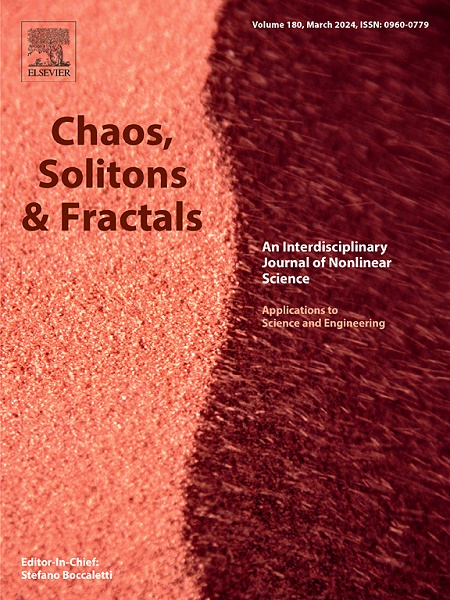CIR bridge for modeling of fish migration on sub-hourly scale
IF 5.6
1区 数学
Q1 MATHEMATICS, INTERDISCIPLINARY APPLICATIONS
引用次数: 0
Abstract
Bridges, which are stochastic processes with pinned initial and terminal conditions, have recently been applied to various problems. We show that a bridge based on the Cox–Ingersoll–Ross process, called a CIR bridge in this paper, reasonably models the intraday number of migrating fish at an observation point in a river. The studied fish migrates between sunrise and sunset each day, which are considered the initial and terminal times, respectively. The CIR bridge is well-defined as a unique pathwise continuous solution to a stochastic differential equation with unbounded drift and diffusion coefficients and potentially represents the on–off intermittency of the fish count data. Our bridge is theoretically novel in that it admits closed-form time-dependent averages and variances, with which the model parameters can be identified efficiently, and is computable by a recently-developed one-step numerical method. The CIR bridge is applied to the sub-hourly migration data of the diadromous fish Plecoglossus altivelis altivelis in the Nagara River, Japan, from February to June.
亚小时尺度上鱼类洄游模拟的CIR桥
桥梁是具有固定初始和终止条件的随机过程,近年来已被应用于各种问题。我们证明了一个基于Cox-Ingersoll-Ross过程的桥,本文称为CIR桥,可以合理地模拟河流观测点的单日洄游鱼类数量。被研究的鱼每天在日出和日落之间迁徙,这分别被认为是开始和结束的时间。CIR桥被定义为具有无界漂移和扩散系数的随机微分方程的唯一路径连续解,并潜在地表示鱼计数数据的开关间歇性。我们的桥在理论上是新颖的,因为它允许封闭形式的时间相关平均和方差,可以有效地识别模型参数,并且可以通过最近开发的一步数值方法计算。利用CIR桥对日本长原河2 - 6月的双穴居鱼Plecoglossus altivelis altivelis亚小时洄游资料进行了分析。
本文章由计算机程序翻译,如有差异,请以英文原文为准。
求助全文
约1分钟内获得全文
求助全文
来源期刊

Chaos Solitons & Fractals
物理-数学跨学科应用
CiteScore
13.20
自引率
10.30%
发文量
1087
审稿时长
9 months
期刊介绍:
Chaos, Solitons & Fractals strives to establish itself as a premier journal in the interdisciplinary realm of Nonlinear Science, Non-equilibrium, and Complex Phenomena. It welcomes submissions covering a broad spectrum of topics within this field, including dynamics, non-equilibrium processes in physics, chemistry, and geophysics, complex matter and networks, mathematical models, computational biology, applications to quantum and mesoscopic phenomena, fluctuations and random processes, self-organization, and social phenomena.
 求助内容:
求助内容: 应助结果提醒方式:
应助结果提醒方式:


